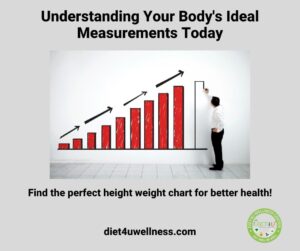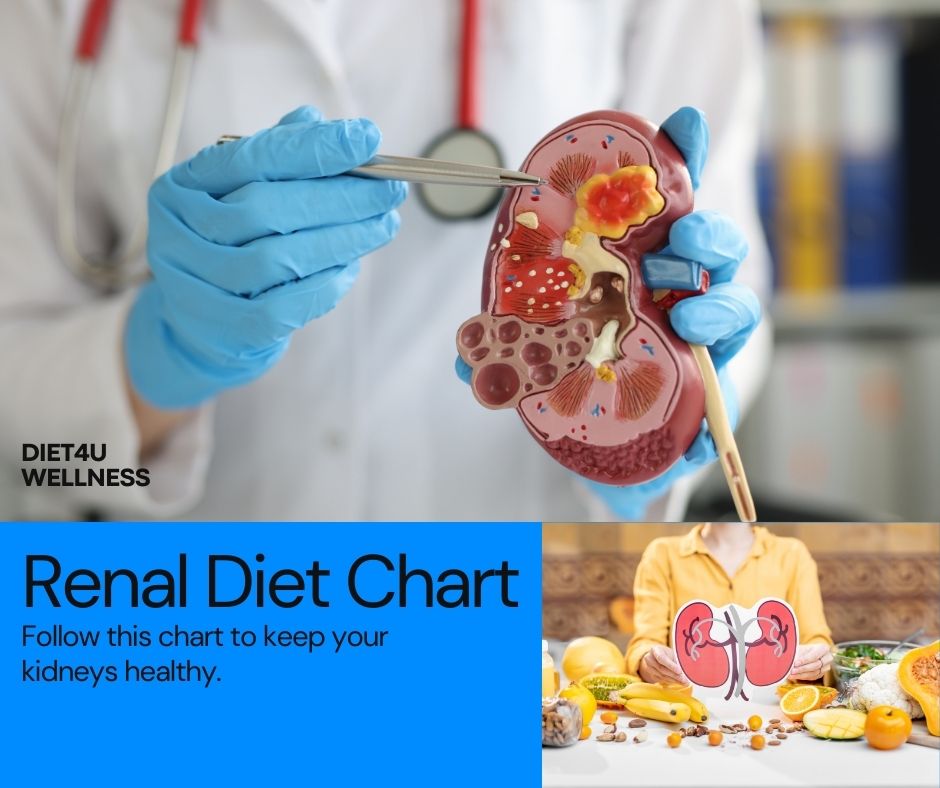
Revitalize Your Kidneys: The Ultimate Guide to Crafting a Renal Diet Chart
Table of Contents
- 1 Revitalize Your Kidneys: The Ultimate Guide to Crafting a Renal Diet Chart
- 1.1 What is Renal Diet?
- 1.1.1 Why to avoid sodium in a renal diet chart?
- 1.1.2 Tips to control Sodium intake in the diet chart for renal patient:
- 1.1.3 Why to avoid Potassium in renal diet chart?
- 1.1.3.1 Tips to control potassium intake in the diet chart for renal patient:
- 1.1.3.2 Why to avoid Phosphorous in a renal diet chart?
- 1.1.3.3 Tips to control phosphorous intake in the diet chart for renal patient:
- 1.1.3.4 Allowed food items in Renal Diet Chart
- 1.1.3.5 Avoid food items in Renal Diet Chart
- 1.1.3.6 Pneumonia Diet Plan : 7 Days Pneumonia Diet Chart For Speedy Recovery
- 1.1 What is Renal Diet?
The food we eat, is first absorbed and then gets assimilated via blood circulation. The constituents, which gradually do not get absorbed is passed out of the body by the process of excretion. The major excretory organ are the two bean-shaped organs called kidney, and its functional unit i.e. nephrons. In instances, where the kidney becomes weak or non-functional, its ability to filter out the toxic substances becomes faulty. Therefore, to prevent such a situation, it is best to try and maintain a diet which would keep the kidneys healthy for a longer duration of time. Dietitian Rukhsana Azhar is describing in this blog about renal diet chart and what food to eat and what food to avoid .
What is Renal Diet?
Renal diet is a specialized diet which is curated especially for people with compromised kidney function or those who are suffering from kidney-related diseases or are undergoing dialysis. Such patients need to keep a check on their diet to prevent any further complication.
Renal diet is low in minerals like sodium, phosphorous, potassium and even calcium to a certain extent. Depending on the extent and severity of the disease, a dietician often prescribes the concerned patient with a renal diet.
Why to avoid sodium in a renal diet chart?
Sodium is an important mineral that maintains a lot of bodily functions like maintenance of nerve impulses, muscle tonicity, and also regulates the fluid balance in the body. However, as we know excess of anything is always harmful, so even excess of sodium can be harmful. Now, unlike other minerals, it might be a bit tricky to limit sodium in the diet, because sodium is consumed by us in various different form. Even though people associate sodium only with salt, it’s not true. Sodium quite definitely is a part of the iodized table salt, but along with that, it is also present in other food components too like pickles, soups, any canned and packaged foods. Sodium in the form of salt, is used as a natural “preservative” for all the packaged foods that we nowadays relish consume, but it unknowingly does more harm than good. Therefore, the sodium uptake rises up in our body, even if we limit the salt content in our food.
This excess sodium causes strain to the kidneys, and often due to prolonged wear and tear might lead to kidney or renal diseases.
Tips to control Sodium intake in the diet chart for renal patient:
Due to the mentioned reasons above, it is essential to control the sodium concentration in the body and here are some tips to limit sodium intake in the diet:
- The simplest tip would be to cut down the salt intake in the diet for renal patient.
- Prevent consumption of packaged and canned food, they use salt as their natural preservative.
- Reduce over-consumption of pickles, as pickles contains huge quantities of salts as a mode of enhancing the taste and shelf-life.
- It is always wise to read and compare food labels and choose the one with the lowest sodium content.
- Unnecessary consumption of snacks like chips, wafers should be avoided as well.
Why to avoid Potassium in renal diet chart?
Just like sodium, potassium is also a naturally occurring mineral which is an integral part of our everyday diet. Potassium helps maintaining normal blood pressure, transmission of nerve signals, ensures water balance in the body and also balances the right pH in the body. Foods containing potassium are bananas, leafy vegetables like spinach, kale, root vegetables like carrot, radish, sweet potatoes etc. Our kidneys, help in flushing out excess potassium, if any and maintain a proper balance in the body.
When kidneys start malfunctioning, removal of excess potassium, is stalled and leads to potassium build-up in the patient’s body. High levels of potassium leads to clinical condition called “Hyperkalemia”, which further increases the risk of developing
- Improper never impulse transmission
- Irregular heartbeat
- Increased risks of heart attacks
Tips to control potassium intake in the diet chart for renal patient:
As the kidneys become weak, the only way to maintain a proper level of potassium in the body is to limit the potassium intake via food.
- Fruits like apricots and bananas should be consumed only in moderation, as they’re known to have high potassium content. As these fruits have other dietary benefits too, it would be wrong to avoid them completely, hence limiting them would be the best way out.
- Take help of a dietician, who can give a proper list of items that can be eaten.
- Under the soil vegetables like carrot, potatoes, sweet potatoes should be avoided as much as possible.
- Serving size should be looked into, at every meal.
- Processed foods with excess preservatives should be avoided strictly.
- Snacks with excess seasonings and salt substitutes should be avoided as well.
Why to avoid Phosphorous in a renal diet chart?
Phosphorous, a mineral that has a huge role in maintaining bone density, health, connective tissue development and proper muscle movement. Also, it helps in proper uptake of carbohydrates and fats in the body. It regulates the production of proteins aiding in cell and tissue repair. Absence of phosphorous, leads to anxiety, heavy breathing, numbness, weakness, irregular weight changes, fatigue, weak bones and teeth. Therefore, phosphorous has to be maintained in adequate amounts. Phosphorous containing food includes:
- Meat
- Cheese (any milk products)
- Canned meat/fish
- Seeds/ nuts
- Fast food
Just like we discussed for sodium and potassium, even excess phosphorous leads to harmful clinical manifestations. It starts excavating calcium out of the circulation, hence further weakening the bones. Kidneys normally, maintain its level but in patients with kidney diseases, it has to be manually controlled via a fixed and regulated diet.
Tips to control phosphorous intake in the diet chart for renal patient:
- Limit the intake of food which are high in phosphorous like canned fish, milk products like cheese, cottage cheese etc.
- Fast food like burger, fries should be limited as they contain preservatives.
- Each portion size should be paid much more attention to.
- The ingredients mentioned at the back of the food items, should be keenly looked into, studied, compared and only then consumed.
- Dieticians and physicians should be consulted for phosphorous binders (helps in lowering the phosphate levels in the body).
Allowed food items in Renal Diet Chart
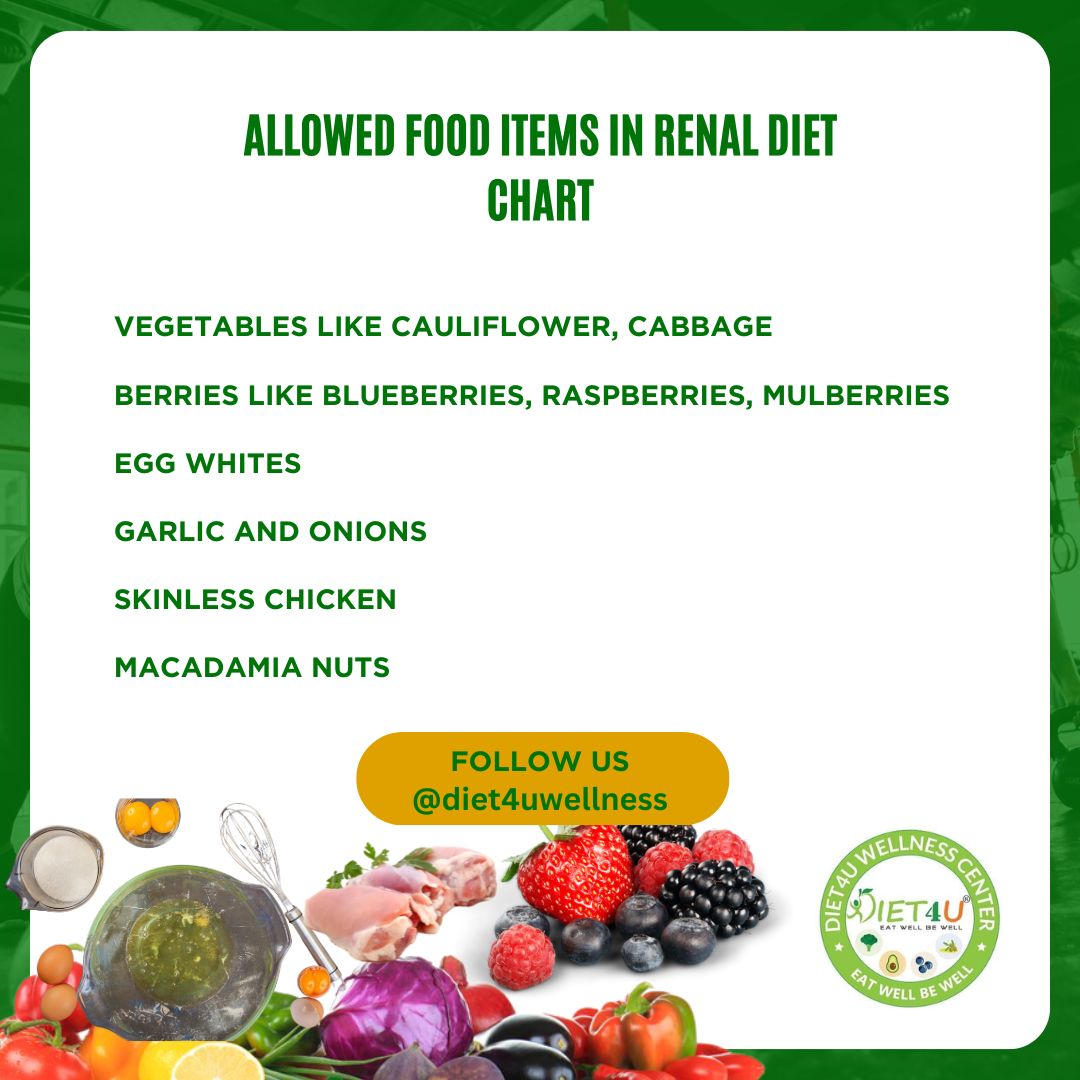
Renal diet which is often prescribed by dieticians to patients with kidney failure is not an easy one to follow sustainably. However, there is hardly any alternative to it other than medications. So, listed down are the food items that can be eaten during renal diet chart.
- Vegetables like cauliflower, cabbage
- Berries like blueberries, raspberries, mulberries which are rich in anti-oxidants
- Egg whites
- Garlic and Onions. As it is hard to completely check salt in the diet, an intelligent way of enhancing the taste of the food, is by complementing the food items with garlic and onion. They additionally contains vitamin B6 as well.
- Skinless chicken can be consumed but in moderation. Chicken with skin have higher amounts of fats and phosphorous.
- Macadamia Nuts. Nuts and seeds are generally high in phosphorous, however macadamia nuts even though a costlier option, can be eaten.
Avoid food items in Renal Diet Chart
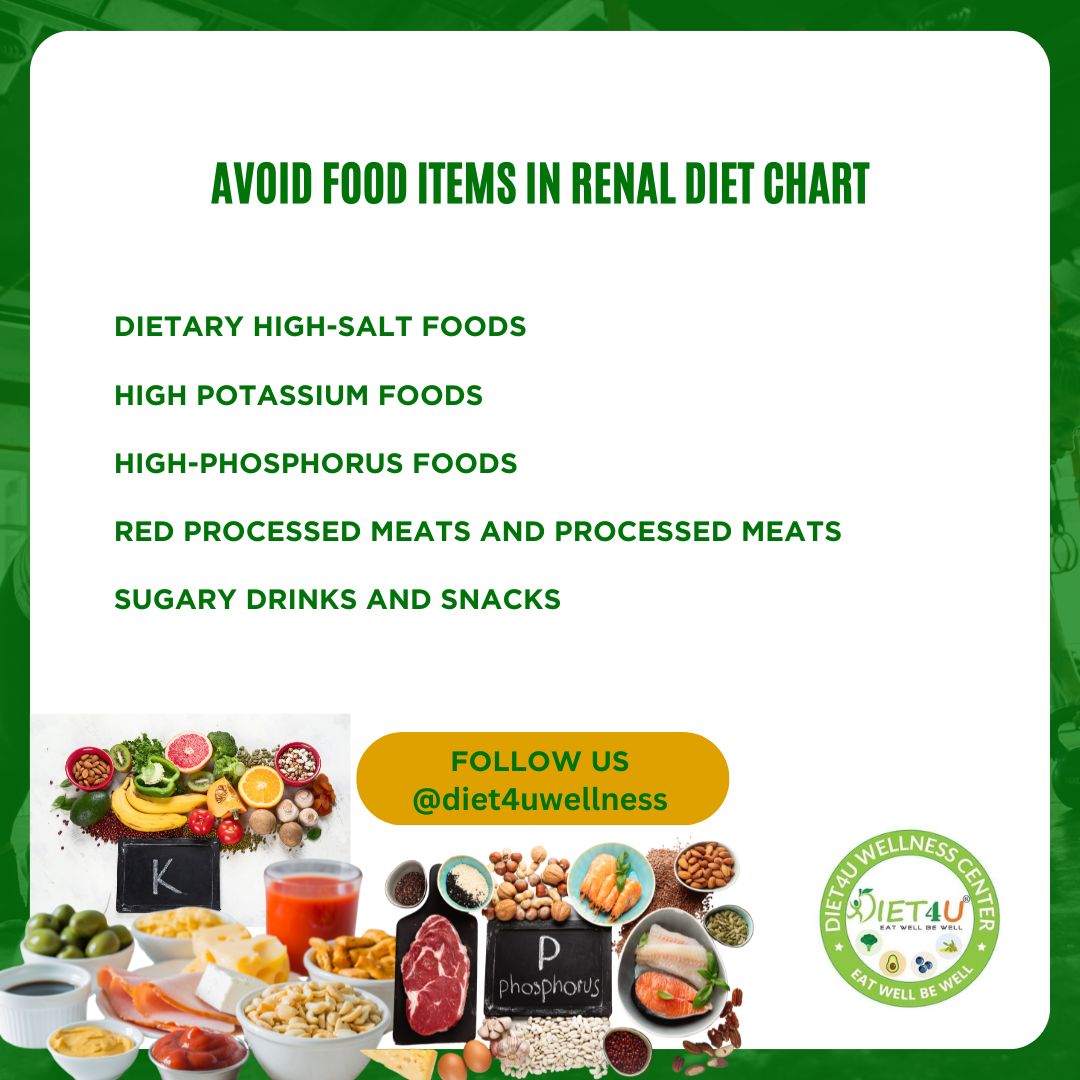
- Dietary High-Salt Foods – The excess sodium in a diet can cause swelling of the kidneys and can raise blood pressure, putting more pressure on the kidneys. Foods high in sodium that you should avoid are processed foods like canned soups and canned snacks, as well as packaged foods and fast food products.
- High Potassium Foods – Potassium is vital for the function of muscles and nerves However, too much potassium could affect kidney health. Foods rich in potassium should be limited or avoid like oranges, bananas potatoes, tomatoes, and other fruits.
- High-Phosphorus Foods – Phosphorus levels must be closely monitored when eating a renal diet since elevated levels of phosphorus could cause mineral and bone problems. Foods high in phosphorus must be avoided. These include processed meats milk products, nuts as well as seeds.
- Red processed meats and processed meats – Red meats and processed meats have large amounts of protein, and phosphorus is not recommended for those suffering from kidney issues. Instead, choose protein sources that are lean such as poultry, fish, or eggs.
- Sugary drinks and snacks – Sugary drinks such as energy drinks and soda as well as sweet snacks such as candies and sweets, should not be permitted for patients with renal impairment. These foods could contribute to weight increase and metabolic imbalances, increasing kidney function.
Pneumonia Diet Plan : 7 Days Pneumonia Diet Chart For Speedy Recovery
Dietitian Rukhsana Azhar’s suggested 7 day renal diet chart
For a healthy maintenance of renal diet chart, one needs to ensure that proper nutrient-rich diet is taken at regular intervals in the form of breakfast, lunch, dinner, with short snack breaks in between if absolutely required.
| DAYS | BREAKFAST | LUNCH |
DINNER |
| MONDAY | Bowl of fresh fruits, like berries mainly.
ü Blueberries ü Cranberries ü Raspberries ü Strawberries ü Slices of watermelon or grapes This could be a refreshing and colorful start to the very first meal of the week. |
Un-polish or brown rice, paired with daal, cabbage, curd. | Grilled chicken salad served with 1/4th cup of brown rice. |
| TUESDAY | Bowl of oatmeal supplemented with special macadamia nuts. (It is best to avoid other seeds and nuts) | 2 chapati along with mixed vegetables with curd being the staple. | Whole wheat wrap with chicken filling inside. |
| WEDNESDAY | Fruit smoothie.
All types of berries along with a scoop of protein powder and milk can be used. |
Half cup brown rice complemented with grilled chicken or fish. | 4 idli along with vegetable sambhar and coconut chutney. |
| THURSDAY | Eggs in the form of sunny side-up, poach, boiled or even omelet. However, it is best to avoid sprinkling of salt over it. | Half cup brown rice complemented with capsicum sabji. | 2 chapati along with daal, ladies finger sabji with curd. |
| FRIDAY | Bowl of curd or protein-rich Greek yoghurt. (Greek yoghurt tends to have a higher protein content as compared to ordinary yoghurt. Curd, whereas is a great probiotics, great for gut microflora) | 2 chapati along with brinjal sabji and tomato dal. | Wheat pasta with lots of vegetables and red or white sauce. (On cheat days). |
| SATURDAY | South Indian cuisine like idli-sambhar. | 2 chapati along with mixed vegetable sabji and salad. | Chicken and vegetable soup with freshly baked bread. |
| SUNDAY | Avocado Toast. (Avocado is a fruit with very minimal calories) | 1 masala vegetable dosa along with sambhar and coconut chutney. | Brown rice along with daal and grilled fish. |
FAQs Regarding Renal Diet Chart
What is the best kind of diet chart for kidney failure?
A renal diet, low in minerals like sodium, potassium, and phosphorous, would be best for patients with kidney failure or other kidney-related ailments.
How do I strengthen my kidneys again?
Drinking plenty of water, fresh fruits, and vegetables will help maintain better kidney health. However, after the damage has already been done, it is best to religiously follow the renal diet chart as the physician prescribes, preventing any further load on the kidneys.
Can I eat processed foods while on a renal diet chart?
No. Consuming processed or canned food while on a renal diet chart is not advised. Processed foods contain excess salts and other preservatives to prevent the food from going stale. This excess salt, sodium, is not filtered by the kidneys properly, leading to abnormal accumulation of sodium, phosphorous, and potassium ions.
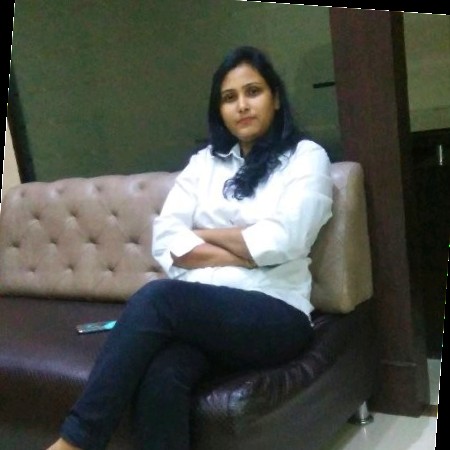
Hello My Name is Dt. Ruksana Azhar and I am a certified dietician and providing online & offline services for Weight Management, PCOS/PCOD Management, Diabetes Management , etc. I have 12+ years of experience in the Apollo Hospital Delhi , Max Super Specialty Hospital Delhi, Lilavati Hospital Mumbai and VLCC healthcare Mumbai. I loves to write healthcare and lifestyle related blog. My favorite part of being a doctor is the opportunity to directly improve the health and wellbeing of my patients and to develop professional and personal relationships with them.


